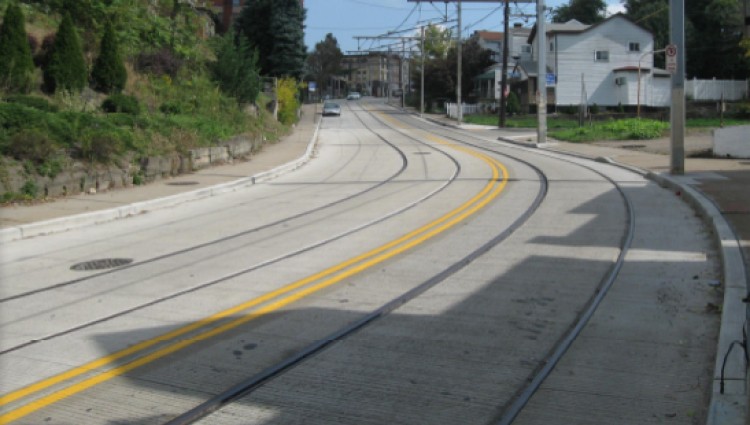Veta 7.0 includes innovative, powerful features and upgrades to help users’ intelligent construction data analysis become more efficient, comprehensive, and easy to use.
The Transtec Group developed Veta as a free map-based intelligent construction technology (ICT) data management software tool. This unique tool enables contractors and highway agencies to analyze data and generate reports for multiple ICT, including intelligent compaction (IC) rollers, paver‐mounted thermal profilers (PMTP), and dielectric profiling systems (DPS).
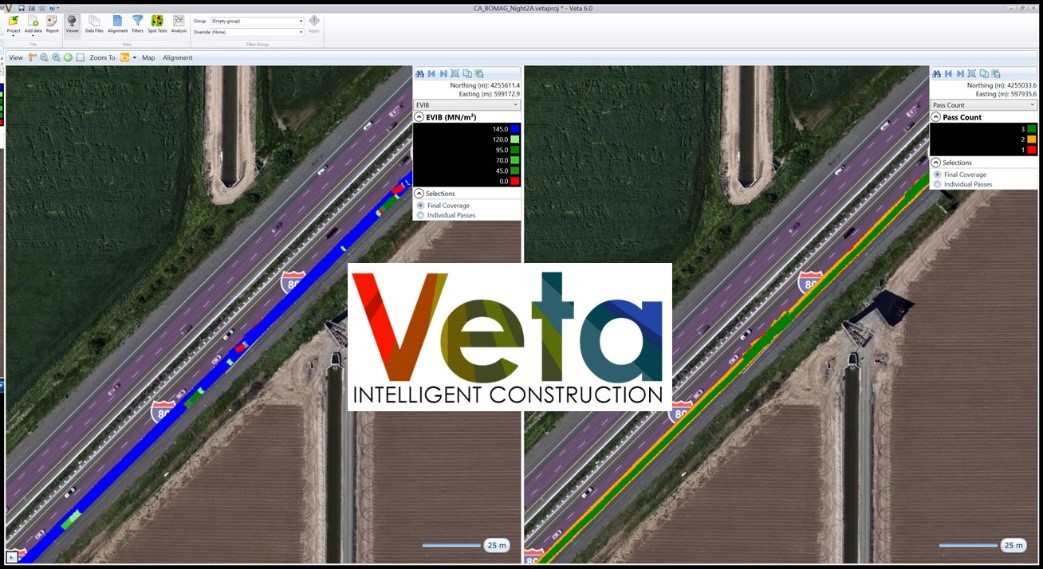
In Veta 7.0, users can import, analyze, and report DPS data from multiple vendors. DPS data comes from ground-penetrating radar equipment capable of collecting asphalt pavement dielectric data after construction is complete. Dielectric data can be calibrated with mix-specific density puck or core data to estimate in-place air voids or density. Conventional spot test data often uses just one core to represent 500-1,000 tons of asphalt, but DPS data provides full-coverage estimated density for the whole sublot. Veta supports linear density calibration equations and maps the estimated in-place air voids and relative density to identify possible construction issues.

Veta 7.0 also improves filter default capabilities. Users can now easily save, import, and apply custom project-specific filters instead of creating new ones each time. Custom default filters are stored in a drop-down menu in Veta, so users can easily toggle between project-specific filters for efficient analysis. In addition, time filters can be used to include or exclude ranges of data based on time stamps. Filters now include a “use all” option to avoid manual selections and improve performance.
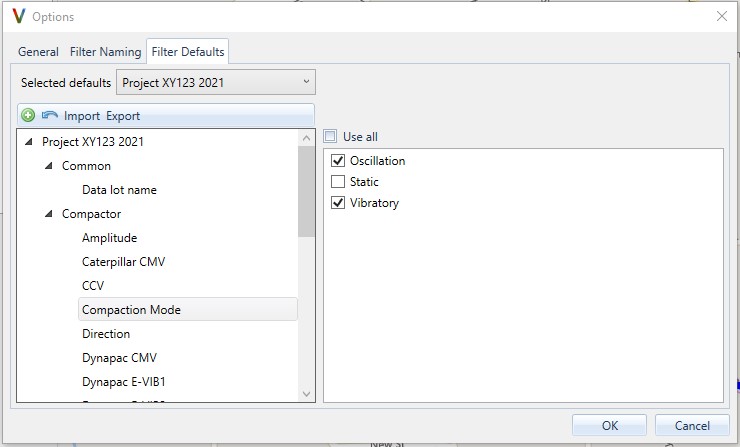
Veta 7.0 includes individual tabs for spot test data. A new trial section tab plots the curve for roller pass count vs. spot test data from a trial section and stores the established optimum rolling pattern. Additionally, spot tests for the final coverage and individual pass data will have their own tabs, streamlining navigation and organization for a better end-user experience.
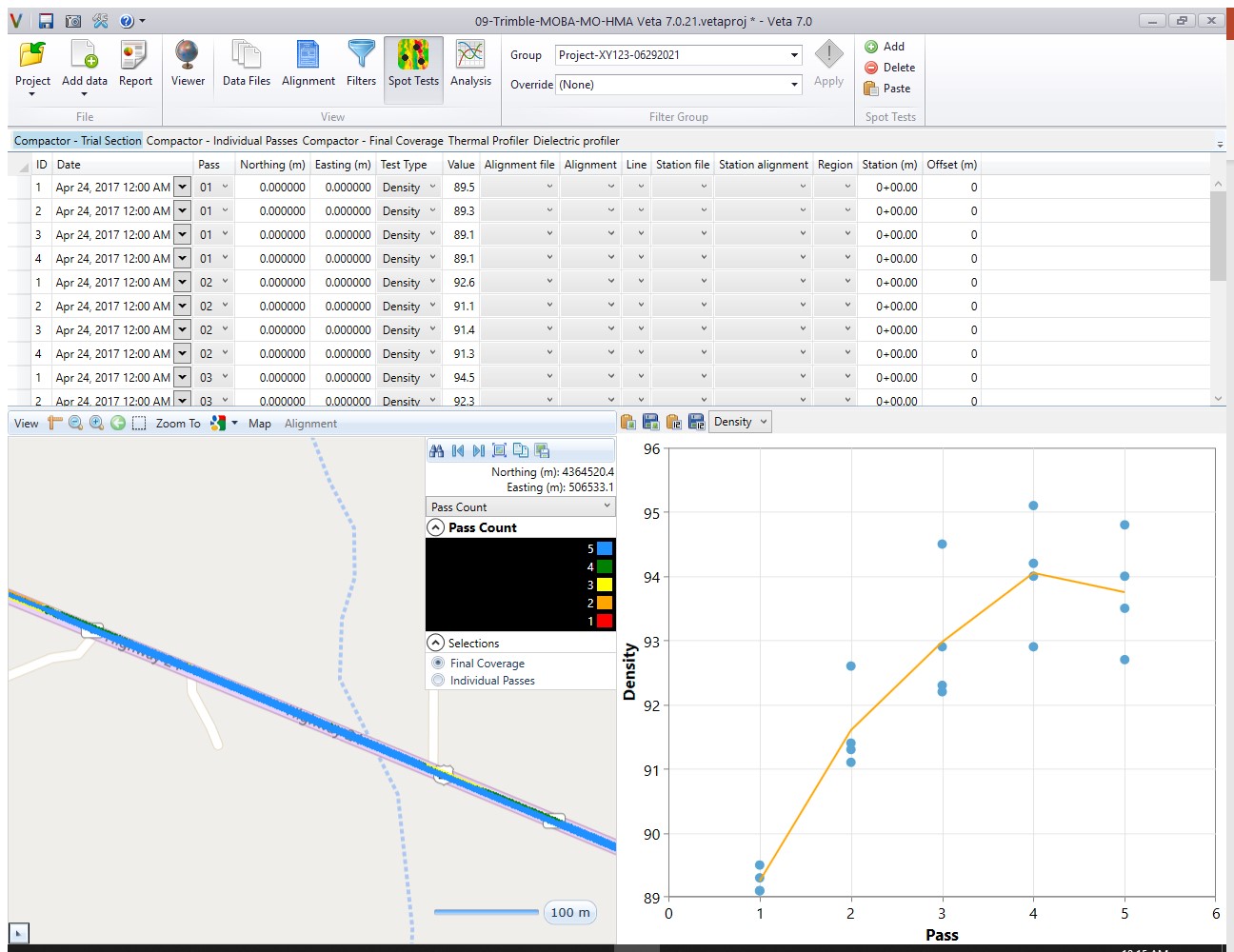
Users can set temperature and Intelligent Compaction Measurement Values (ICMV) thresholds for individual passes for state specifications. Another new analysis feature is the correlation of spot test data with all compactor measurements, not just ICMV. This new feature is helpful for researchers to establish trends between spot tests and all ICT data.
Compaction curves are now easier to locate on the summary tab under results. Compaction curve results include a new temperature loss curve. Temperature loss curves can be used to show asphalt is cooling during compaction. The average elapsed time between passes is shown under the temperature loss curve as a quality control tool to prevent inadequate rolling patterns (such as rollers lagging too far behind the paver). Veta now displays ICMV compaction curves and temperature loss curves for sublots to identify areas with construction issues and visualize consistency between sublots.
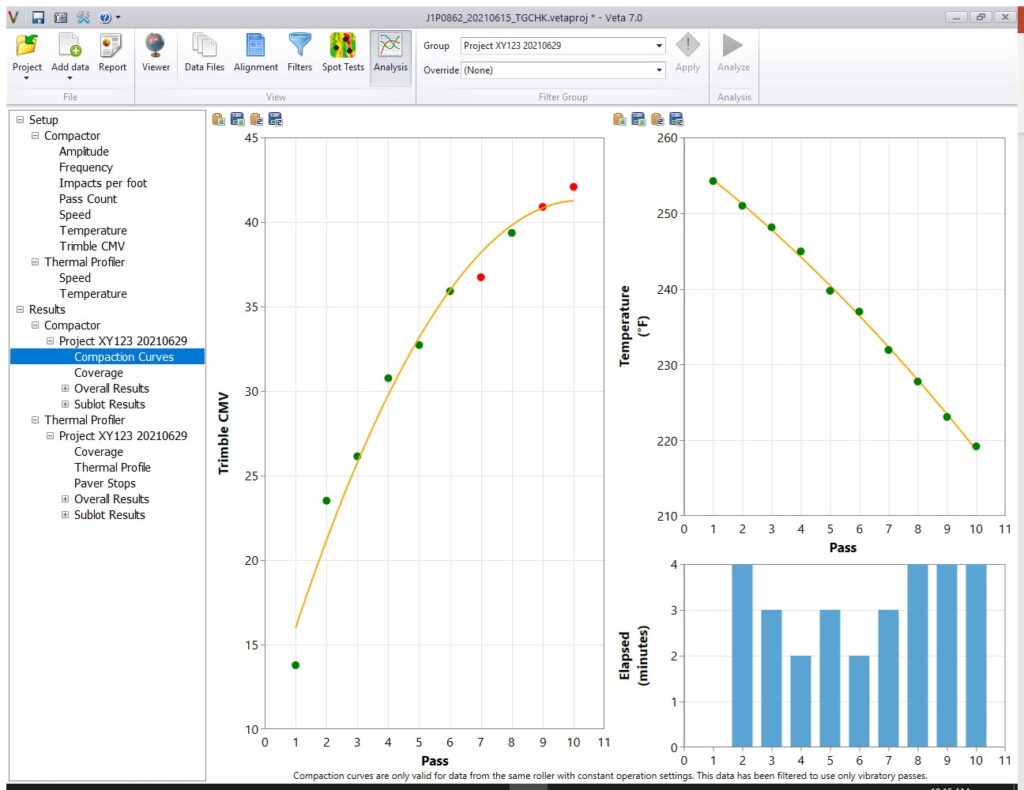
ICMV change and temperature change are new data metrics that can be viewed on the Veta maps. These data metrics allow users to visualize ICMV and temperature changes between individual passes.
An updated User’s Guide is available to walk users through the new and existing features of Veta 7.0. View the Veta 7.0 Release Notes to see more new features.
Veta development is funded by the FHWA, Minnesota Department of Transportation (MnDOT), The Transtec Group, Transportation Pooled Fund TPF-5(334) Enhancement to the Intelligent Construction Data Management System (Veta) and Implementation, and TPF-5(466) “National Road Research Alliance – NRRA (Phase-II).” Veta is required in AASHTO PP80, PP81, and MP39 specifications, some US State DOT’s specifications, and other agencies worldwide.



